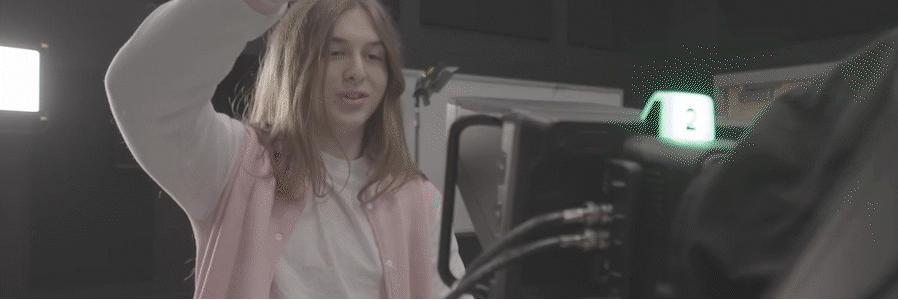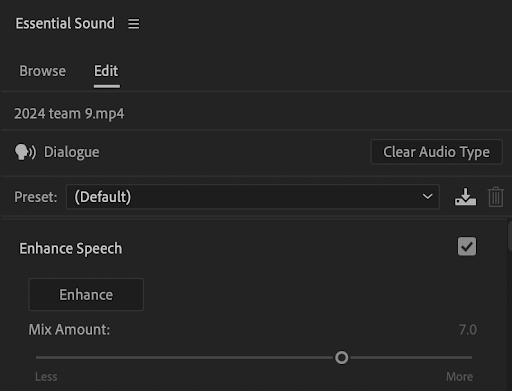POV: SkillsUSA Nationals Video News Production Judge
It’s now Sunday morning and I am starting to feel like I have recovered from the week. This week is one of the longest in my year. It starts early on Monday and runs through Thursday afternoon with very little breaks.
I remember when SkillsUSA announced their move from Louisville to Atlanta in 2021. As an advisor, I was not really excited. It’s hard to get kids excited to do things and often the idea of travel is enough to get over the hump. As a teacher in Georgia, I didn’t think traveling to Atlanta would be enough to get more kids excited.
Since that time, I have changed careers and now my role is to support SkillsUSA via the Media Education Foundation of Georgia (MEFGA). MEFGA supports SkillsUSA at the state and national level. This means Chris Gegen, the executive director, works with industry partners to get the equipment and supplies needed to execute several of the contests at the state level but for nationals the support is focused solely on the Video News Production contest. This year that support came from Ikan, Canon, Ross Video, and my company, Amitrace.
POV: Anchor 1 at the SkillsUSA NLSC Video News Production contest
Ikan provided tripods and teleprompters, Canon provided XA705 cameras, and Amitrace provided… me (for better or worse). Ross Video provided a Carbonite Black switcher and playback/recording workflow.
For me, the best part of nationals is that I am not in charge. Matt Peschau from Ross is the technical chair so unlike my other obligations for this contest, I get to take a secondary role. My role at nationals is simply complex: help build the “studio” and “control room” and judge the technical directors during the contest.
The week starts early on Monday. I travel to the Amitrace office in Norcross to get the cables, etc that I will need for the studio build. Mid-morning, I meet Matt at the Georgia World Congress Center (GWCC) to get started building out the space. This is just getting tables in the right places, basic cable runs done, and a plan for how I will build out the space.
Early in the afternoon, Gegen arrives with the main studio gear (cameras, prompters, etc). That’s when it gets busy for me. We build three camera set ups for the studio - tripod, teleprompter, and camera. If you have ever built a teleprompter set up you know how cumbersome that can be.
Later the switcher arrives. I had nothing to do with that build out. The equipment is provided by a school and that advisor takes care of all of that build. I get a quick tutorial on how to use the gear and we are off.
About an hour of taping cables closes out the day on Monday. I’ve been on the road a ton this month so despite the break in logic and reason, I make the 70 mile drive home each night - sleeping in my bed felt like a treat at this point.
Tuesday morning was a later start. We couldn’t get into the space until after noon due to scheduling issues. There are so many competitions that every room in the GWCC is used and some, especially those with 400+ seats, are used for several meetings and competitions.
After sitting through a couple of orientations, it was our turn. It’s great to see an entire auditorium full of students and advisors who are competing. There were a total of 29 teams competing - 25 high school teams and 4 post-secondary teams. Orientation is an opportunity for Peschau to share what is expected in the contest. During the orientation, teams receive a uniform check from a member of the national education team. The teams are lined up around the room and the inspector makes the rounds.
A crow’s nest view of orientation at the 2025 SkillsUSA NLSC.
Students then take the knowledge test - a multiple choice test where teams work to show their understanding of the basic principles of news and video production. This test is a part of the scoring and is often used as a tie breaker! The questions are simple but the pressure of the event seems to make them more difficult.
Orientation closes with the teams getting to get familiar with the workflow for the contest. The talent and floor manager get to look at the teleprompters, tweak the cameras, and get the lay of the land in the “studio.” In the back of the house, I share my knowledge on the switcher and graphics workflow. The students typically sit in the seat, punch through the cameras, punch a video, and move on. There are some who make the round a couple of times and ask more questions than they should. It’s easy to see who knows how to switch a show and who knows how to operate the board at their school… There is a big difference.
My view for two days of judging the Technical Directors at the 2025 SkillsUSA NLSC
The contest starts Wednesday morning with a 7am call time for the first post-secondary team. This means the judging team has to be on their game by 8:30am which if you know Atlanta traffic is a tough task. The whole team got there on time. There are 14 standards that the judges are looking for in the contest. We divvy up the standards between the four judges. It’s impossible for each judge to score all of the standards, not only because of the number but because of the layout of the event. The technical director is on the other side of a wall from the studio so the front of house judges can’t see the technical director. I was in charge of the technical directors. This is a lot of fun for me. I really enjoy watching those kids work - even those who struggle.
On Wednesday, we scored 17 teams in a 30 minute cycle. The students have 20 minutes from the time they enter the production space to practice their show and produce that 3 minute show. That’s when the job gets tough for me. I have a teacher’s heart so it’s hard to watch some of the TDs struggle. One in particular hit me hard. The student got preview and program confused and struggled for more than half of their time trying to figure out why their talent team was confused by what they saw on the monitor. It was heart breaking. Once they figured it out, they were so frustrated they struggled with the actual production. (I told them that I had run this contest many times and what I watched them go through was the hardest thing I had ever done. It really hurt my heart.) 17 teams and a couple of issues meant I was onsite for 12 hours on Wednesday - add a 2 hour commute and it was a long day.
Thursday was the last day of contesting. Again 7am call time for the teams. The 12 teams felt much easier than the day before. It is wild what just doing 5 fewer teams made the day feel like. We got to wrap a little earlier obviously but the biggest task of the day was striking everything and getting out of the GWCC. Everything we built on Monday had to be taken down. The great part of the strike was that most of the judging team helped strike. It made quick work of it! We got out of the building in about 2 hours after the last contestant left the stage.
A couple of notes about my thoughts on what I saw from the teams:
Doing the things to be seen are unnecessary. Several teams had rehearsed things that “make sure the judges see.” Those things aren’t needed. Just do your job. The floor manager shouldn’t look like they are on the deck of an aircraft carrier launching F14s.
Tech Directors should direct. They need to share everything that needs to be done or is being done. MANY of the TDs started the show, then went into cruise control when it came to telling the floor manager and anchors what to do. The team that won had a technical director who directed in every sense of the word. They told the floor manager what to do, shared what they were doing, counted into and out of elements, and made it so clear that I didn’t have to look at a monitor to know what was going on.
Rundowns matter. The person scoring the technical director and the floor manager are looking at the rundown vs what is actually done (2 separate standards). If they don’t match, that’s double trouble in terms of points.
Video and Graphics Cues matter. From my memory, there were only 3 teams out of the 29 that got full points on the rundowns. The other 26 didn’t include the video and graphics information in their rundown. I used to instruct my students that if there is a box on the rundown, it should have information. Even if that information is N/A.
Scripts should be tight… super tight. The students are given 20-25 stories to work from to build their show. That’s all they can use. The issue we saw this year at nationals is that the students aren’t reading the stories to understand the context and the overall story. They are reading to get enough information to fill 30+ seconds. We had all kinds of crazy takeaways. For examples, did you know that the US dropped 3 nuclear bombs last week? What about the fact that Lebron James is completing his 38th game of his career (Also there was nothing in any of the provided stories about Lebron James…)
Ultimately the SkillsUSA NLSC is a long week. As a judge there is naturally an adversarial relationship between you and the contestants. They are looking for someone or something to blame when things don’t go their way… and usually it’s you. There are teams that go out of their way to thank you when they are done and there are teams that stomp off mad. At the end of the day, every team gets the same treatment. I get to see what kids are learning and it’s a great trade off. Friday when I returned to the office I was asked how it went and my response still rings true some 4 days later “Spiritually, Emotionally and Psychologically - I am great. Physically - I am trashed.”
Here’s to next year and seeing who shows up and shows out.
Meet the Author, Tom White
Tom White is the Education and House of Worship Specialist at Amitrace. Tom's role is to help educators build better programs through better training, planning, and equipment. Before joining Amitrace, Tom was the Broadcast Engineer at Grady College of Journalism and Communication at the University of Georgia. Prior to that role, Tom taught at Morgan County High School and Rockdale Career Academy where he and his student produced thousands of live streams for sports, news, and community events. Tom’s program at the Rockdale Career Academy received the NFHS Network Program Of The Year in 2016 and his program at Morgan County High School received the New Program of the Year title in 2018. Tom has been a long time contributor to many publications and is the host of Teaching to The Test Pattern Podcast.












As summer winds down, the familiar rhythm of a new school year approaches. For educators like James Peach, the weeks leading up to students' return aren't just about shuffling papers; they're a strategic dance of preparation, aiming to ignite inspiration and cultivate self-sufficiency.